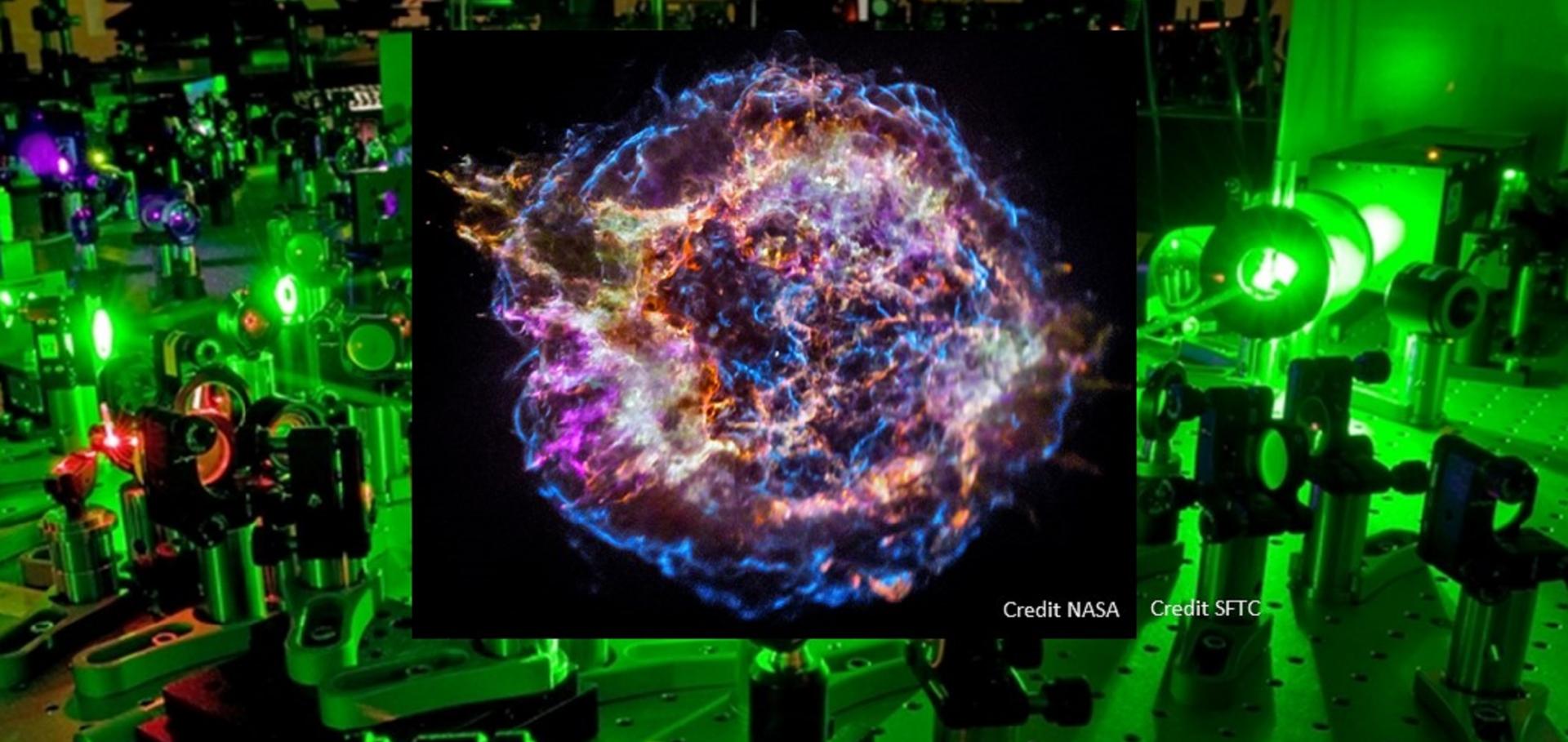Cosmic ray acceleration to ultrahigh energy in radio galaxies
EPJ Web of Conferences EDP Sciences 210 (2019) 04002
Abstract:
The origin of ultrahigh energy cosmic rays (UHECRs) is an open question. In this proceeding, we first review the general physical requirements that a source must meet for acceleration to 10-100 EeV, including the consideration that the shock is not highly relativistic. We show that shocks in the backflows of radio galaxies can meet these requirements. We discuss a model in which giant-lobed radio galaxies such as Centaurus A and Fornax A act as slowly-leaking UHECR reservoirs, with the UHECRs being accelerated during a more powerful past episode. We also show that Centaurus A, Fornax A and other radio galaxies may explain the observed anisotropies in data from the Pierre Auger Observatory, before examining some of the difficulties in associating UHECR anisotropies with astrophysical sources.Supersonic plasma turbulence in the laboratory
Nature Communications Nature Research 10 (2019) 1758
Ultra-high energy cosmic rays from shocks in the lobes of powerful radio galaxies
Monthly Notices of the Royal Astronomical Society Oxford University Press 482:4 (2018) 4303-4321
Abstract:
The origin of ultra-high energy cosmic rays (UHECRs) has been an open question for decades. Here, we use a combination of hydrodynamic simulations and general physical arguments to demonstrate that UHECRs can in principle be produced by diffusive shock acceleration (DSA) in shocks in the backflowing material of radio galaxy lobes. These shocks occur after the jet material has passed through the relativistic termination shock. Recently, several authors have demonstrated that highly relativistic shocks are not effective in accelerating UHECRs. The shocks in our proposed model have a range of non-relativistic or mildly relativistic shock velocities more conducive to UHECR acceleration, with shock sizes in the range 1 − 10 kpc. Approximately 10% of the jet’s energy flux is focused through a shock in the backflow of M > 3. Although the shock velocities can be low enough that acceleration to high energy via DSA is still efficient, they are also high enough for the Hillas energy to approach 1019−20 eV, particularly for heavier CR composition and in cases where fluid elements pass through multiple shocks. We discuss some of the more general considerations for acceleration of particles to ultra-high energy with reference to giant-lobed radio galaxies such as Centaurus A and Fornax A, a class of sources which may be responsible for the observed anisotropies from UHECR observatories.Fornax A, Centaurus A and other radio galaxies as sources of ultra-high energy cosmic rays
Monthly Notices of the Royal Astronomical Society: Letters Oxford University Press 479:1 (2018) L76-L80
Abstract:
The origin of ultra-high energy cosmic rays (UHECRs) is still unknown. It has recently been proposed that UHECR anisotropies can be attributed to starbust galaxies or active galactic nuclei. We suggest that the latter is more likely and that giant-lobed radio galaxies such as Centaurus A and Fornax A can explain the data.Electron acceleration by wave turbulence in a magnetized plasma
Nature Physics Springer Nature 14 (2018) 475-479


